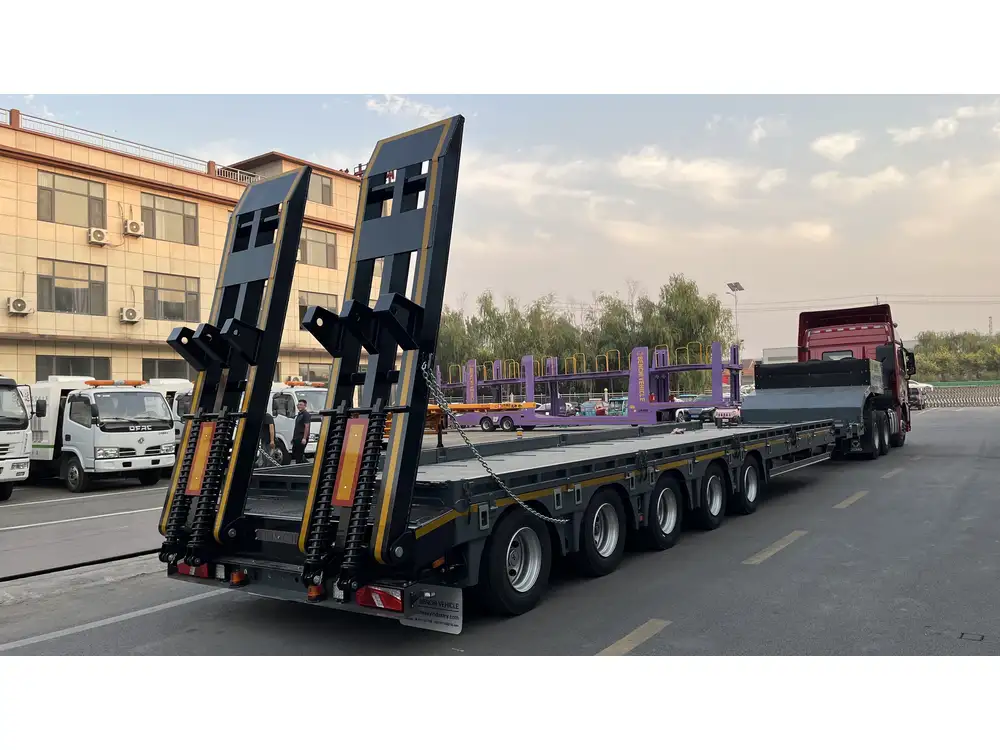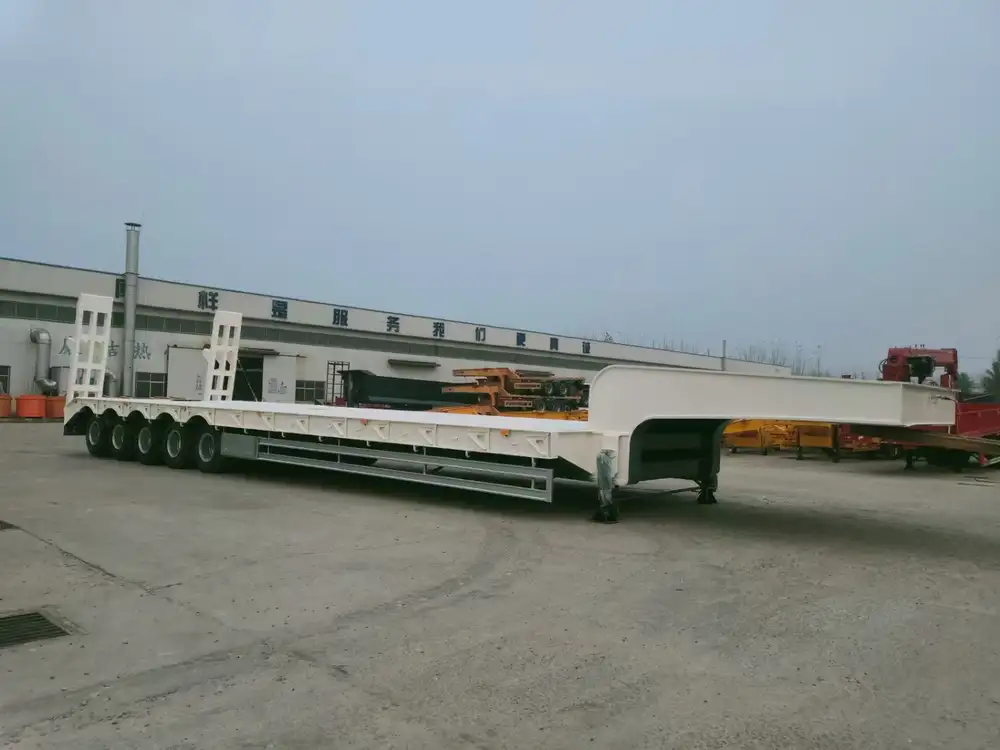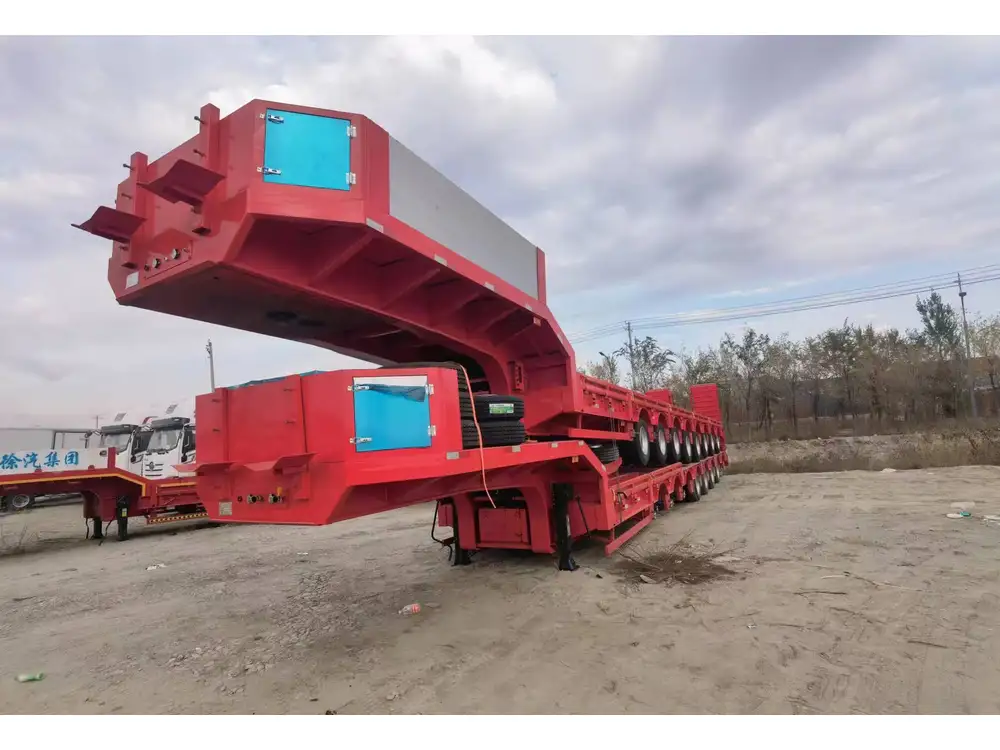Skeletal trailers stand out as pivotal components in the transportation industry, primarily due to their unique design and functional versatility. They are specialized types of trailers engineered to haul shipping containers, making them indispensable for logistics and freight transportation. In this article, we will delve deep into the intricacies of skeletal trailers, exploring their design features, advantages, types, and applications in the modern transportation landscape.
Understanding the Design of Skeletal Trailers
Structural Features
Skeletal trailers, as the name implies, possess a design that resembles a skeletal structure, characterized by an open framework that supports the load without encapsulating it. The essential elements of a skeletal trailer include:
- Chassis: The backbone of the skeletal trailer, typically composed of high-strength steel to withstand heavy loads.
- Container Locks: Integrated locking mechanisms at strategic points on the chassis that secure the shipping container during transit.
- Axles and Suspension Systems: Designed to offer stability and ensure a smooth ride, facilitating the handling of varying load weights.

Variability in Design
While the basic skeletal trailer design remains consistent, manufacturers often offer variations tailored to specific customer needs:
- Fixed Gooseneck: Features a permanently attached neck that provides additional strength.
- Detachable Gooseneck (DG): Allows for more flexible loading options by enabling the neck to be unhitched.
- Extendable Versions: Capable of accommodating containers of different lengths.
Advantages of Using Skeletal Trailers
Skeletal trailers offer a range of advantages that enhance their appeal to logistics companies and freight haulers. These benefits include:
| Advantage | Description |
|---|---|
| Cost Efficiency | Reduced operational costs due to lightweight design and lower fuel consumption. |
| Versatility | Capable of transporting various sizes of shipping containers, adapting to different loads. |
| Ease of Handling | Simplifies loading and unloading processes, leading to reduced turnaround times. |
| Durability | Built from robust materials, skeletal trailers endure tough working conditions. |
| Enhanced Stability | The low center of gravity offered by the design minimizes swaying and enhances safety. |
Types of Skeletal Trailers
Skeletal trailers come in several distinct types, each optimized for specific applications:

Standard Skeletal Trailers
Typically suited for transporting standard ISO containers, these trailers comprise a simple design with essential features. They are the most commonly used skeletal trailers.
Extendable Skeletal Trailers
Ideal for transporting a variety of container lengths, these trailers feature an extendable framework, allowing operators to adjust the length according to the cargo requirements. This flexibility makes them perfect for multi-modal transportation settings.
Double-Trailer Skeletal Systems
This configuration consists of two connected skeletal trailers, providing an increased cargo capacity. It is often utilized in high-demand logistics scenarios where shipping efficiency is paramount.

Refrigerated Skeletal Trailers
Designed to transport temperature-sensitive containers, these trailers integrate a refrigeration mechanism to maintain the desired temperature for perishable goods.
Applications of Skeletal Trailers
Shipping and Logistics
In the shipping and logistics sector, skeletal trailers play a critical role in moving large volumes of goods efficiently:
- Intermodal Transport: Skeletal trailers facilitate seamless transitions between different modes of transport—be it truck, rail, or maritime.
- Port Operations: Their design allows for quick loading and unloading of containers, significantly improving port efficiency and turnaround time.

Retail Distribution
Many retail operators use skeletal trailers to transport goods from distribution centers to retail outlets, ensuring timely delivery and stock replenishment.
Construction and Heavy Equipment Transportation
The construction industry often relies on skeletal trailers to move heavy machinery and oversized components to job sites, where durability and reliability are paramount.
Best Practices for Using Skeletal Trailers

Safety Considerations
Ensuring the safety of skeletal trailer operations is vital. Below are several critical practices:
- Regular Maintenance: Frequent inspections and maintenance of both the trailer and the container securing mechanisms are essential.
- Proper Load Distribution: Ensuring that cargo is evenly distributed can help prevent trailer swaying and enhance stability during travel.
- Adherence to Regulations: Keeping up-to-date with local and national transportation regulations ensures compliance and mitigates legal liabilities.
Training for Operators
It is essential that operators receive thorough training on the specific usage of skeletal trailers. This should include:
- Loading Techniques: Operators should be adequately trained in securing containers to reduce the likelihood of accidents during transit.
- Emergency Protocols: Educating staff on emergency procedures can help minimize risks associated with potential trailer malfunctions or road hazards.
Economic Impact of Skeletal Trailers

Cost Factors
While investing in skeletal trailers presents initial costs, several factors can contribute to long-term economic benefits:
- Fuel Efficiency: Their lightweight design results in lower fuel consumption compared to traditional trailer types, translating to significant savings over time.
- Higher Load Capacity: Being capable of handling larger shipments at once reduces the frequency of trips required, further cutting operational costs.
Financing Options
For businesses looking to acquire skeletal trailers, various financing options are available, including:
- Lease Agreements: Leasing provides financial flexibility with lower upfront costs.
- Financing Through Manufacturers: Many manufacturers offer financing solutions tailored to business needs.
Conclusion
In a fast-paced transportation environment where efficiency and reliability reign supreme, skeletal trailers emerge as integral assets. Their unique design, coupled with a plethora of advantages and applications, positions them as preferred choices for container transport and logistics. From freight companies aiming to optimize operations to retail businesses looking to enhance supply chain efficiency, skeletal trailers provide the necessary support to navigate the complexities of modern logistics. By understanding the nuances of their design, benefits, applications, and best practices, stakeholders can make informed decisions that align with their operational goals and lead to sustained success in the competitive transportation industry.
In summary, skeletal trailers are more than merely a mode of transport; they are a solution that bridges the gap between efficiency and reliability, shaping the future of freight transportation. As this sector continues to evolve, embracing advancements in design and technology will further enhance the role of skeletal trailers in the global supply chain.



